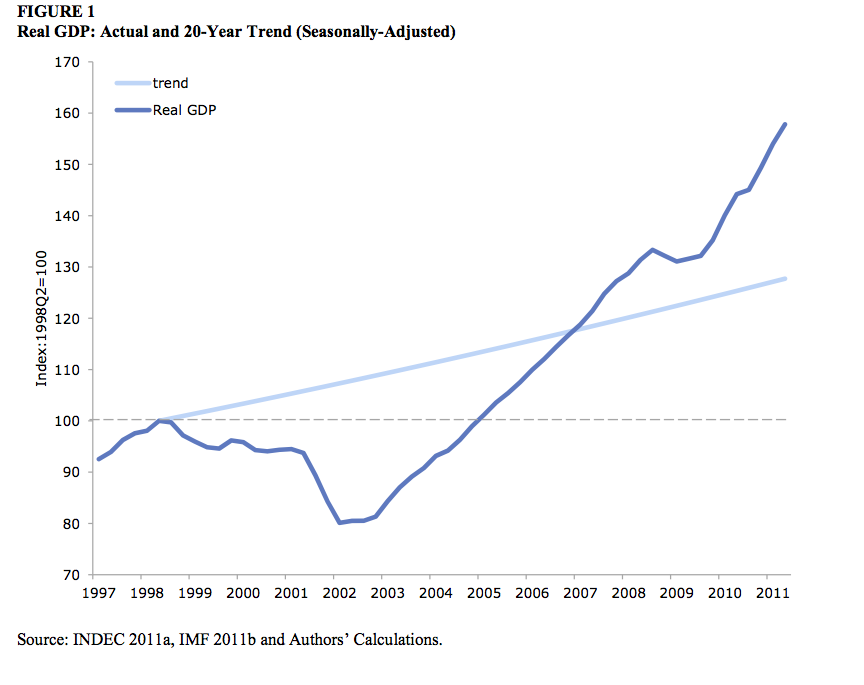David Brooks has a very interesting column about America's multiethnic future. This is a topic I've been thinking about for quite a while, especially after some Twitter conversations with some hard-core anti-immigrant nativists. Brooks' most important point is that America's increasing racial diversity is inevitable now:
[U]p until now, America was primarily an outpost of European civilization. Between 1830 and 1880, 80 percent of the immigrants came from Northern and Western Europe. Over the following decades, the bulk came from Southern and Central Europe. In 1960, 75 percent of the foreign-born population came from Europe, with European ideas and European heritage.
Soon, we will no longer be an outpost of Europe, but a nation of mutts, a nation with hundreds of fluid ethnicities from around the world, intermarrying and intermingling...
If enacted, the immigration reform bill would accelerate these trends...It would boost the rise of non-Europeans...In other words, immigration reform won’t transform America. It will just speed up the arrival of a New America that is already guaranteed...
On the whole, this future is exciting. The challenge will be to create a global civilization that is, at the same time, distinctly American. Immigration reform or not, the nation of mutts is coming.I agree that this future is exciting. It is also scary and dangerous.
On Twitter, one of the nativists I talked to (a guy called "Heartiste") predicted that new immigrants wouldn't acquire the same national identity that earlier immigrant groups acquired, because of racial differences. A white immigrant, he argued, can acquire the culture of America's Northwest European founders, but a nonwhite immigrant cannot.
I'm much more optimistic than Heartiste, but I have to admit that what he brings up is a real worry. There is evidence that ethnic diversity reduces people's willingness to support public good provision, and that ethnic diversity makes people less likely to support redistribution. And George Orwell noted that a sense of group solidarity was essential to national defense during World War 2.
This implies that when people don't feel a sense of "in-group" commonality with their countrymen, the collective mechanisms of society break down. This is essentially the notion of "volksgemeinschaft", developed by the Germans during World War I (the height of German nationalism). It provides a rough-and-ready explanation for why Japan has such good public infrastructure, and why Sweden is such a redistributive, egalitarian society.
America seems to be already suffering from a lack of "volksgemeinschaft". The popular notion that government spending is mostly racial redistribution (from whites to blacks), promulgated by conservatives like Rush Limbaugh, has made even poor white conservatives implacably anti-government (unless their own Medicare benefits are threatened, of course). As a result, not only are we more unequal than the ethnically homogeneous rich countries of Europe and East Asia, but we have inferior public good provision - crumbling highways, falling bridges, slow internet, etc.
Will nonwhite immigration make this worse? I hope not, but I think the possibility exists.
But like I said, I am a lot more optimistic than the nativists. Why? Because I see lots of examples where multiracial nations end up working pretty well. But there's a catch - they all seem to do it by becoming post-racial.
Two good examples are Japan and Turkey. Talk to any Japanese person, and he or she will tell you that there is only one "Japanese" race. But look at Japanese people's faces, or do genetic tests, and you find that there is a fair amount of diversity; some Japanese people look like Polynesians, while others look like Russians. But these physical differences are not recognized as constituting "real" ethnic differences. Turkey is an even more extreme example; plenty of Turks look like what we would call "white" people, and plenty of others look very dark-skinned and sort of Arabic, while a few even have an East Asian look to them. But they are all just "Turks". Of course, these synthetic ethnicities took centuries to construct.
An even better example is..."white" America. Europeans, you'll notice, do not consider themselves to all be of the same "white" race; "whiteness" is an American invention. And it's an invention that keeps changing. When the country was founded, Germans and Swedes were not considered "white", but that changed as they immigrated in large numbers in the 19th Century. At that time Italians, Greeks, and other South Europeans were still not considered "white", until large numbers of them immigrated here in the 20th century. Nowadays, few if any Americans would deny that Italians are "white people". The group keeps expanding to include people who look more and more physically different from each other.
But the "white-ification" trick isn't going to work this time around. Many Hispanics will be inducted into the "white" category, but it is highly unlikely that Chinese or Indian immigrants will ever be called "white". And Asia is where the bulk of our net immigration is coming from. If we're going to forge ethnic solidarity between whites, Asians, and the Hispanic immigrants who don't see themselves as "white", then we are going to have to find another way.
What we're going to have to do, I think, is create the notion of an "American" ethnicity.
First and foremost, this means having a common language. That language will be English. Language, it seems to me, is one of the main things (along with race and religion) that defines an ethnicity. Fortunately, despite the dire warnings of people like Sam Huntington, Hispanic immigrants seem to be switching from Spanish to English at a rate equal to or even faster than earlier ethnic groups. "Official language" and "English only" laws will not be required. And Asian immigrants are even less of a worry on this front.
Next, it means intermarriage. Racial mixing will hopefully reduce frictions between groups. As David Brooks says, we must become "a nation of mutts" (if you don't like the canine analogy, fair enough, but dog lovers will know that mutts tend to be healthier and smarter than purebreds!). Fortunately, interracial marriage is proceeding at a very rapid rate, especially for East Asians and Hispanics (South Asians are a notable exception). In terms of actual policies to encourage more intermarriage, the only thing I can think of is urbanism, which leads to more chance encounters with people from different social groups.
On the intermarriage front, history gives us reason to be hopeful. As an example, take my own ancestral religio-ethnic group - Jews. Once famed for their insularity and refusal to outmarry, Jews now have an outmarriage rate of over 50% in the United States (and that percent is going up). Jews are a much smaller group than Asians, of course, but the precedent is encouraging.
I hope that English, intermarriage, and our ubiquitous pop culture will be enough to forge a unique post-racial "American" national identity. They might be. But I worry that more might be needed. Last time we assimilated a large group of immigrants, we had the special event of World War 2 to bring different American ethnicities into close contact, force them to work together, and forge a bond against a common enemy. Thankfully, another war on that scale looks unlikely, but it means we might not get the "freebie" in terms of assimilation this time around.
Therefore, I think we - and by "we" I mean pro-immigration Americans - need to start thinking about revising our negative opinion of nationalism and cultural assimilation. The World Wars understandably gave nationalism a bad name in intellectual circles - things like pledges of allegiance, national anthems, and patriotic history classes were seen as forms of militaristic mind control. There is merit to this view. Ancestral cultures should not be purposefully stamped out or denigrated, and blind worship of the nation-state is of course a very dangerous thing.
But that said, I think we need to realize that in order to assimilate the new waves of immigrants as effectively and rapidly as possible, we should temper our distrust of nationalism and assimilation. This is more a matter of values than of actual policy. Liberals in particular should tone down our rhetoric against American flags, "jingoism", and other expressions of nationalism. And the idea that "multiculturalism" requires resistance to assimilation, and the deliberate preservation of pockets of ancestral cultures within the American whole, probably needs to go by the wayside; remnants and pockets of ancestral culture will preserve themselves just fine on their own. But a unified national culture seems like it needs more active encouragement.
On the whole I think we are already moving in this direction. The much-discussed idea of "universal national service", though probably impractical, shows that liberals are starting to remember the society-building value of the nationalism of the FDR years.
But all the assimilation and nationalism in the world will be a moot point if large groups of white Americans refuse to accept the new nonwhite immigrants. This seems to me to be the biggest danger, since our current lack of "volksgemeinschaft" seems to stem largely from conservatives' insistence that blacks, Hispanics, and urban liberals are not "real Americans". That has to stop; conservatives need to do their part in making the newcomers feel like a real part of the team. That means elevating conservative values like hard work and family values and entrepreneurial spirit - which immigrants tend to have in great quantities - above breeding and bloodlines and skin color. Conservatives need to kill their bad habit of pointing at anyone whose race they don't recognize and saying "macaca".
Anyway, like I said, I am very optimistic about the new waves of immigrants. I do not believe that they will cause our nation to disintegrate. I believe that America is not like the Germany or France or other countries that have struggled with mass immigration. America started as a multi-ethnic experiment, and we have a special ability to turn huge numbers of foreigners into normal, regular, Americans at a very rapid pace (thus altering our own culture in the process). And the signs are encouraging: Even with the percentage of foreign-born residents at an all-time high and the economy still in the doldrums, native-born Americans' attitudes toward immigrants are as positive as they've been since we started taking polls.
I was in Union Square Park in New York recently, and I was looking at the statue of George Washington...at the foot of the statue, kids from every nation you could imagine were hanging out, sharing cigarettes, hitting on each other, skateboarding, and generally being goofy. Black kids, South Asian kids, East Asian kids, plenty of white kids too. I wondered what old George would think if he could see what the country he started had become. Maybe I'm wrong, maybe I'm just being romantic, but I think he'd be pretty damn pleased.


















